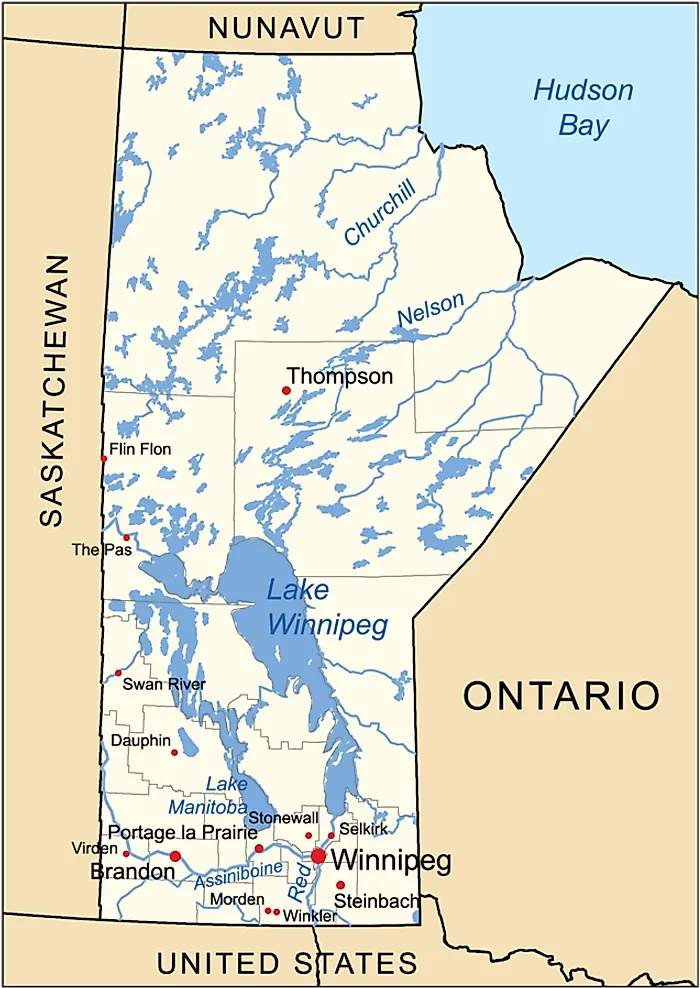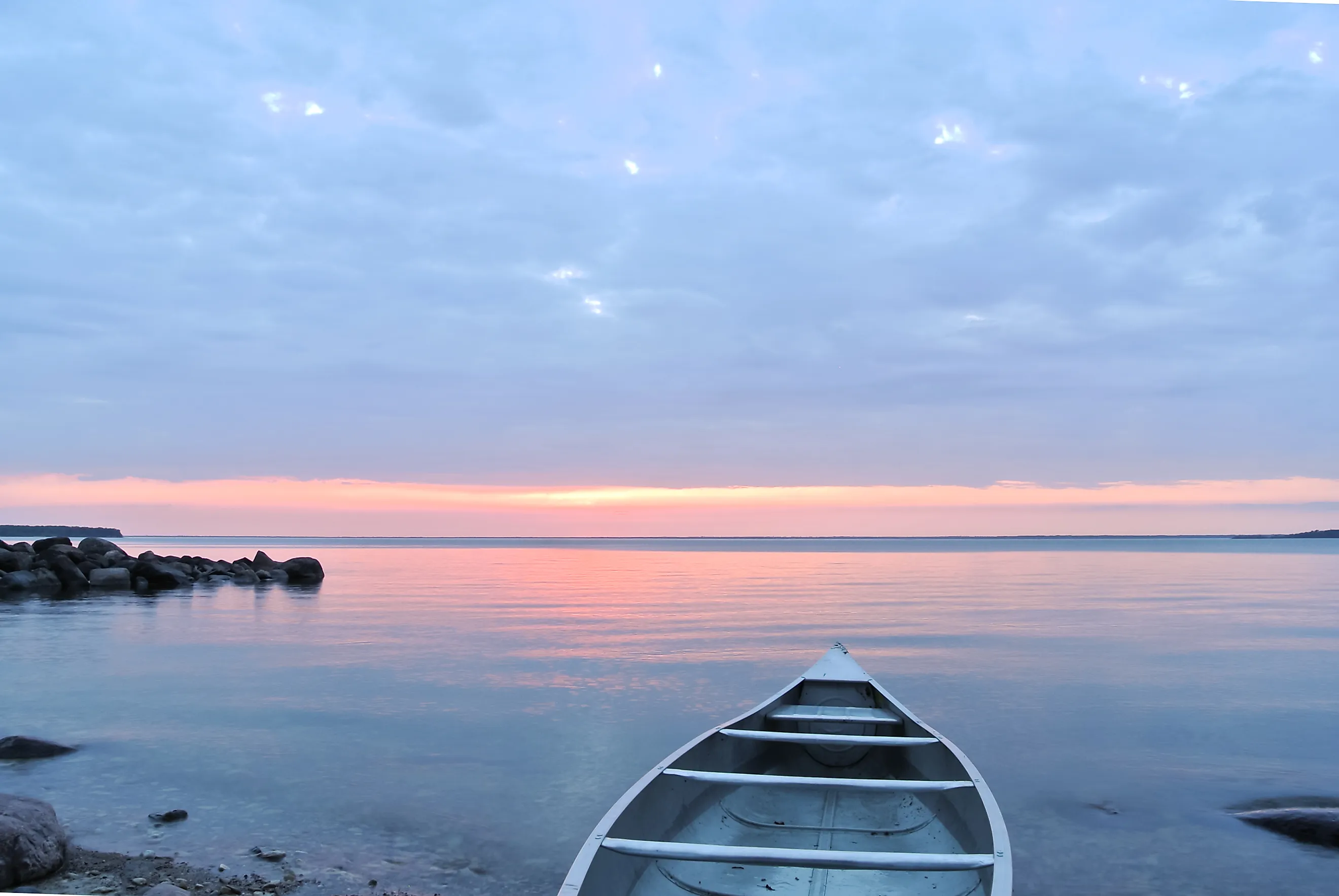
Lake Winnipeg
Covering an area of 24,514 km2, Lake Winnipeg is a large lake located in the south-central part of the Canadian province of Manitoba in North America. The lake is considered to be the world’s 11th largest lake and Canada’s 6th largest freshwater lake.
In 1690, the first European to visit the lake was the English explorer Henry Kelsey. The lake’s name refers to the Indigenous Cree name for the “muddy waters” (Winipek). In 1730, the Canadian military officer La Vérendrye called the lake Ouinipigon. Later, the capital of Manitoba was named Winnipeg.
Geography
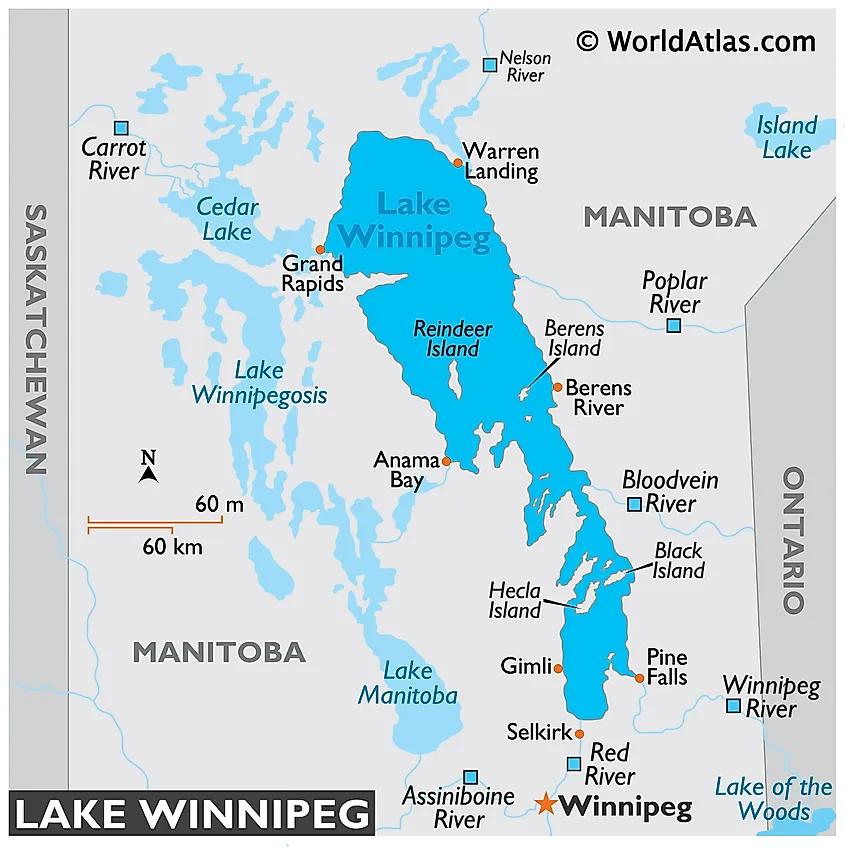
Lake Winnipeg is situated in a lowland basin and is the remnant of the large glacial Lake Agassiz. The lake has a length of about 416 km and a maximum width of about 109 km. It is relatively shallow and has a maximum depth of 36 m with an average depth of about 12 m. Lake Winnipeg has the largest watershed among all Canadian lakes and drains approximately 982,900 km2 of land area. It receives water from four Canadian provinces as well as from four US States. Some of the major rivers that flow into Lake Winnipeg are Saskatchewan, Red, Assiniboine, Winnipeg, Dauphin, Bloodvein, Poplar, Berens, and Manigotagan Rivers. In its northern part, the lake drains into the Nelson River at a yearly rate of 2,066 m3 per second. The Nelson River, the primary outflow of Lake Winnipeg, then forms a part of the watershed area of the Hudson Bay.
Lake Winnipeg is used by Manitoba Hydro as one of the world’s largest hydro-electric reservoirs. Many undeveloped islands like Hecla, Black, and Deer are also located in the lake. The lake is surrounded by spectacular natural features including large limestone cliffs, immaculate sandy beaches, numerous bat caves, pristine boreal forests, and several rivers.
Wildlife
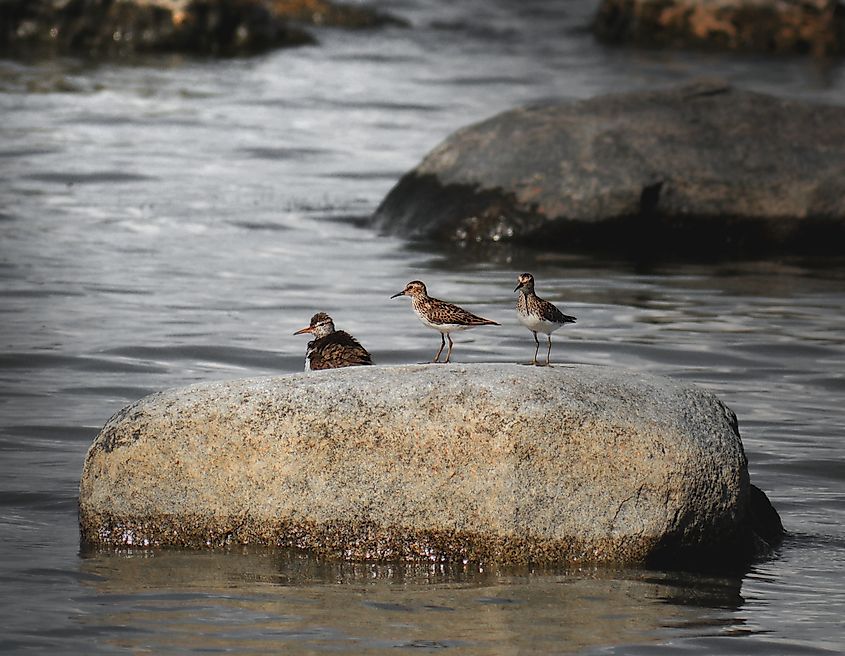
Numerous fish species are found in Lake Winnipeg. These include catfish, codfish, common carp, freshwater drum, lampreys, minnows, pikes, perch, smallmouth bass, sticklebacks, sunfish, sturgeon, trout, trout perch, walleye, and whitefish. Two fish species, the bigmouth buffalo and shortjaw cisco, found in the lake are considered to be at risk. During the summer season, the lake serves as an important feeding and breeding site for a large number of avian species. Some of these are the American white pelican, ring-billed gull, greater scaup, piping plover, herring gull, Caspian tern, and the double-crested cormorant.
Many protected areas like the Hecla-Grindstone Provincial Park, Elk Island Provincial Park, Beaver Creek Provincial Park, and Winnipeg Beach Provincial Park are located along Lake Winnipeg.
However, Lake Winnipeg currently faces some environmental threats like algal bloom and the presence of harmful invasive species like zebra mussels. The lake was declared as “the threatened lake of the year” by the Global Nature Fund in 2013.
Economy
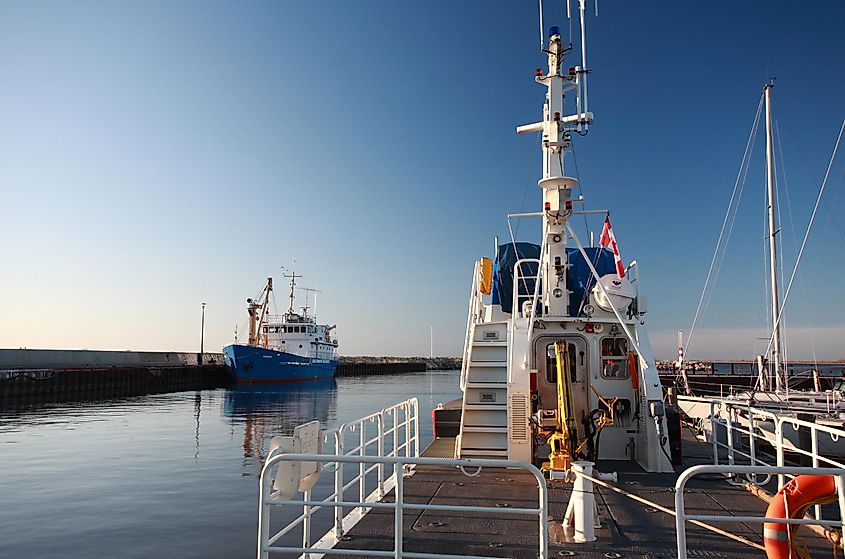
Fishing is a major economic activity in Lake Winnipeg. A significant part of Manitoba’s $30 million annual fishing industry revenue is generated by the commercial fisheries of Lake Winnipeg. The lake also serves as the main passage for various goods, passengers, and a prominent site for tourism and other recreational activities. Many scenic beaches are found on the southern shores of the lake, which attracts a large number of tourists from the city of Winnipeg during the summer season. Several communities like Gimli, Grand Marais, Winnipeg Beach, Victoria Beach, etc. are also located along the shores of Lake Winnipeg.
